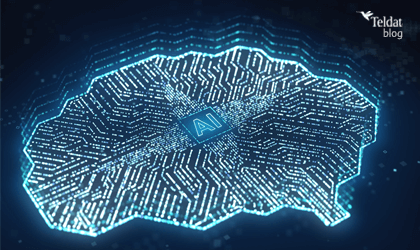 In this era of technology and digitalization, Artificial Intelligence model (AI) has become a powerful, widely used tool in various fields. From healthcare to cybersecurity to speech recognition, AI has revolutionized our interactions with technology and proven its potential in improving the efficiency and accuracy of automated tasks.
In this era of technology and digitalization, Artificial Intelligence model (AI) has become a powerful, widely used tool in various fields. From healthcare to cybersecurity to speech recognition, AI has revolutionized our interactions with technology and proven its potential in improving the efficiency and accuracy of automated tasks.
But as AI becomes more prevalent, so too do concerns about the potential attacks and vulnerabilities it faces. In this article, we will explore various attacks on artificial intelligence, the uses to which these attacks are put, and potential ways of defending against such attacks to safeguard the integrity of AI security systems.
Attacks on Artificial Intelligence.
Attacks on Artificial Intelligence (AI) come in different shapes and forms with different goals. Some of the more common attacks are:
- Data manipulation attacks: Hackers can feed malicious data to Artificial Intelligence – AI model training sets in an attempt to influence the future decisions of AI models. By introducing false data or noise into a training set, hackers can influence a model’s decisions and compromise its performance. This could lead to biased results or incorrect decisions.
- Adversarial attacks: Consist of making subtle tweaks to input data to fool a model into producing incorrect results. For example, changing imperceptible pixels in an image can cause an image recognition model to misclassify that image. By making small imperceptible changes to images/texts, hackers can cause a model to make incorrect decisions. This is a major cause of concern for safety-critical applications like autonomous driving or infrastructure security.
- Model poisoning: Here, hackers inject manipulated data into the training process in an attempt to corrupt the Artificial Intelligence – AI model. As a result, the model may make incorrect decisions or become vulnerable to specific attacks.
- Model stealing: Hackers can try to steal part of or entire Artificial Intelligence – AI models. Through reverse engineering or unauthorized system access, they can obtain trained models and use them for some type of gain (including, for example, reproducing functionality or discovering weaknesses in the original model).
Uses of attacks on Artificial Intelligence
And why would someone want to carry out these types of attacks? One reason is because they have become a powerful tool for cybercriminals. Among the more common uses for these attacks are:
- a) Fraud and identity theft: Artificial Intelligence – AI can be used to create convincing fake data, such as AI-generated images of people that don’t exist. This fake information can be used to create false identities and carry out online fraud.
- b) Disinformation and manipulation of opinion: Hackers can automatically generate fake content or manipulate existing content to influence public opinion and spread disinformation on a large scale.
- c) Vulnerability exploitation: Hackers can exploit the weaknesses they find in AI models to evade security systems, compromise networks or access sensitive information.
Defenses against attacks on Artificial Intelligence
While attacks on Artificial Intelligence – AI can pose significant challenges, there are also defenses and countermeasures being developed to mitigate the risks. Some of the potential defenses that can be used include:
- Robust training: Artificial Intelligence – AI models can be trained with larger and more diverse data sets, making them more resistant to adversarial attacks and data manipulation. This may involve using learning algorithms that are less sensitive to disturbances in the input data.
- Anomaly detection: Implementing systems capable of detecting adversarial attacks and data manipulation can help identify and mitigate attacks before they do any real harm.
- Validation and verification: Proper data verification mechanisms to detect manipulation and noise in the training sets are essential. Rigorous and thorough testing of AI models (during both training and production) can help to identify potential vulnerabilities and ensure the robustness of the system.
- Security in Artificial Intelligence – AI systems: Implementing security measures in systems hosting Artificial Intelligence – AI models is essential. This includes practices such as encryption (of models), access controls, monitoring and report suspicious activity.
Conclusion – attacks on Artificial Intelligence
As Artificial Intelligence – AI becomes an integral part of our society, addressing the security challenges that come with it is vital. Attacks on AI present significant risks in several areas, but fortunately, defenses are also being developed. By implementing robust training strategies, anomaly detection and proper data validation, we can protect the integrity of AI systems and get the most out of AI’s potential.
As Artificial Intelligence – AI continues to develop, Cybersecurity must remain a priority. Only with the collaboration of researchers, security professionals and industry, will we be able to build secure, resilient AI systems for a safer, more reliable digital future.
At Teldat, we have this very much in mind with our XDR solution which, in turn, draws on be.Safe Pro (cybersecurity) and be.Safe XDR (Network Traffic Analysis). Both are Teldat products.
Sources
https://www.esedsl.com/blog/ejemplos-de-ciberataques-lanzados-con-inteligencia-artificial
https://www.incibe.es/empresas/blog/los-10-vectores-ataque-mas-utilizados-los-ciberdelincuentes
https://venturebeat.com/security/defensive-vs-offensive-ai-why-security-teams-are-losing-the-ai-war/


























